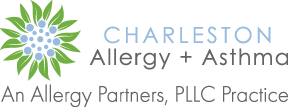People with food allergies have traditionally been advised that the only option for treatment is to avoid the food and treat any reactions that may occur from accidental exposure. This can be very difficult and anxiety provoking for patients and families, especially as children start attending school, camps and birthday parties. Many allergists are working hard to find other, more effective, ways to manage food allergies. One strategy that has shown benefit is food oral immunotherapy, or OIT.
Food oral immunotherapy, is the process of reducing a person’s sensitivity to foods which cause allergic reactions. The food allergic person will eat gradually increasing amounts of their food allergen over time to help reduce their risk of an allergic reaction. The first doses are very tiny, for example 1/10,000th of a peanut, and must be carefully measured, but over time this amount is increased until the patient can tolerate a small amount of the food. This slow exposure to the food allergen causes the immune system to develop tolerance, or the ability to tolerate the food when eaten. Over time the immune system is retrained to tolerate food allergens. This change in the immune system is temporary, and tolerance only continues if OIT is continued. OIT only works for IgE allergy. It has not been shown to be effective for celiac disease, food intolerance, or food protein induced enterocolitis.
OIT requires a significant commitment of time and attention to following the specific protocol developed by your board-certified allergist. Before OIT is started your allergist will ensure all other allergic conditions are under good control. This includes allergic rhinitis (hay fever), asthma and eczema. There are two phases of OIT: escalation and maintenance. The first escalation day takes place in your allergist’s office. After this visit the same amount of food will be eaten at home every day until the next escalation dose. The first dose of a new escalation dose is always given in the allergist’s office with close observation to treat any reactions. The escalation process generally takes six to nine months but can vary if there are allergic reactions to the dose or schedule conflicts. Home doses require an hour of observation by an adult and two hours of avoidance of physical activity or overheating. Maintenance dosing continues indefinitely at a standard dose to maintain tolerance.
Allergic reactions during OIT are common, occurring in 50-95% of patients. Most reactions are itchy mouth or stomach pain and most resolve without treatment or with antihistamines alone. Stomach pain, gas, nausea, heartburn and vomiting have also occurred and are particularly bothersome for patients. Any time a food allergen is eaten there is a potential for a severe allergic reaction (anaphylaxis) to occur. Studies show between 0-10% of patients (<1% per dose) are treated with epinephrine for a reaction during home dosing. Eosinophilic esophagitis (EoE), an inflammatory condition of the lining of the swallowing tube occurs in 1-3% of patients on OIT. For comparison, EoE is rare in the general population, occurring in less than 0.5% of people. Patients with EoE have difficulty swallowing, sensation of food sticking in the throat, severe reflux, nausea and/or abdominal pain. In most cases, the condition resolves in a few months once OIT is stopped but there have been some cases in which EoE did not get better.
Currently, food allergy management is based on avoidance of the allergenic foods and treatment of reactions if they occur. For some families, the disruption and fear caused by uncontrolled food allergies so negatively affects their quality of life that OIT is a great option. For other families, OIT is not a good option due to the rigid schedule and significant side effect risks. Currently available OIT is not an FDA approved procedure or drug as it uses common foods. There are several pharmaceutical products (Aimmune and Viaskin) under investigation for FDA approval that are expected to be available in the coming years.
Talk to your board-certified allergist if you think OIT might be a good treatment option. Your allergist will be able to provide guidance based on the severity of other allergic diseases, such as asthma, and counsel you on the benefits and risks of treatment. Several websites and Facebook groups can provide additional information and differing viewpoints, here are some helpful links oit101.org, AAAAI.org, ACAAI.org, foodallergy.org.
We are excited to be able to provide food allergy patients and their families another option in the spectrum of food allergy management. All of our board-certified allergists have extensive experience with food allergy and oral food challenges.
Request an appointment to speak with one of our board-certified allergists to see if this food allergy treatment is a good option for you or your family.




